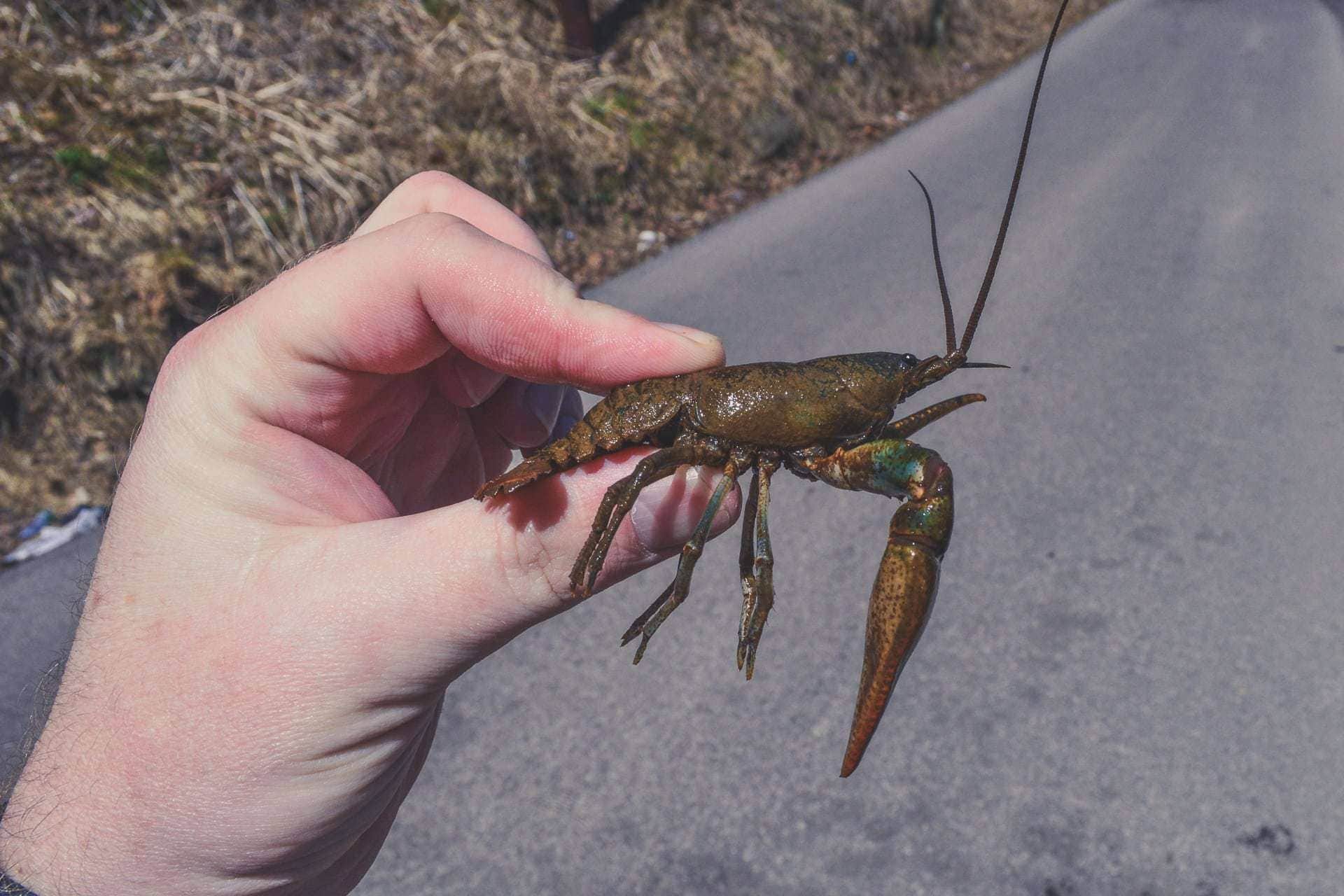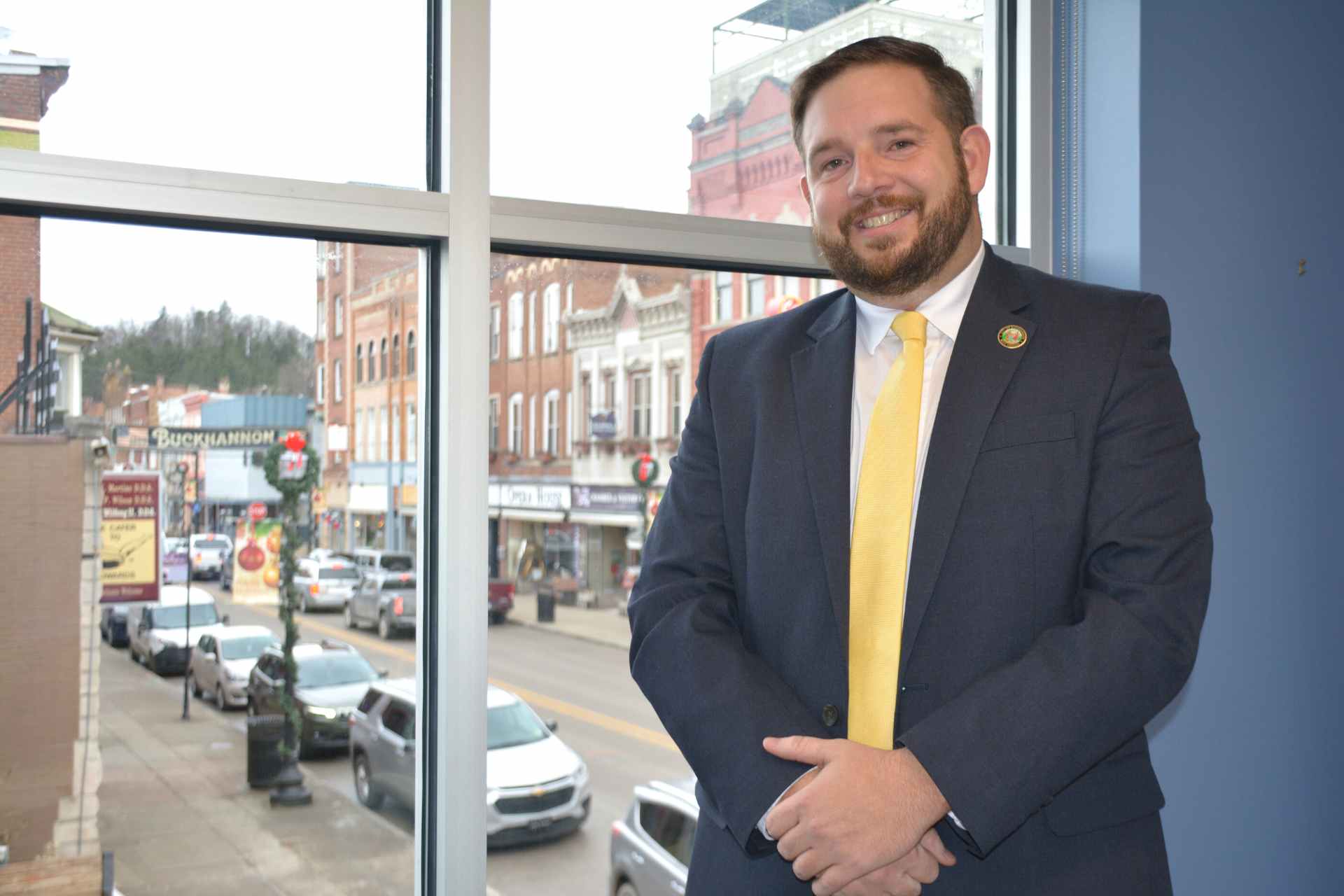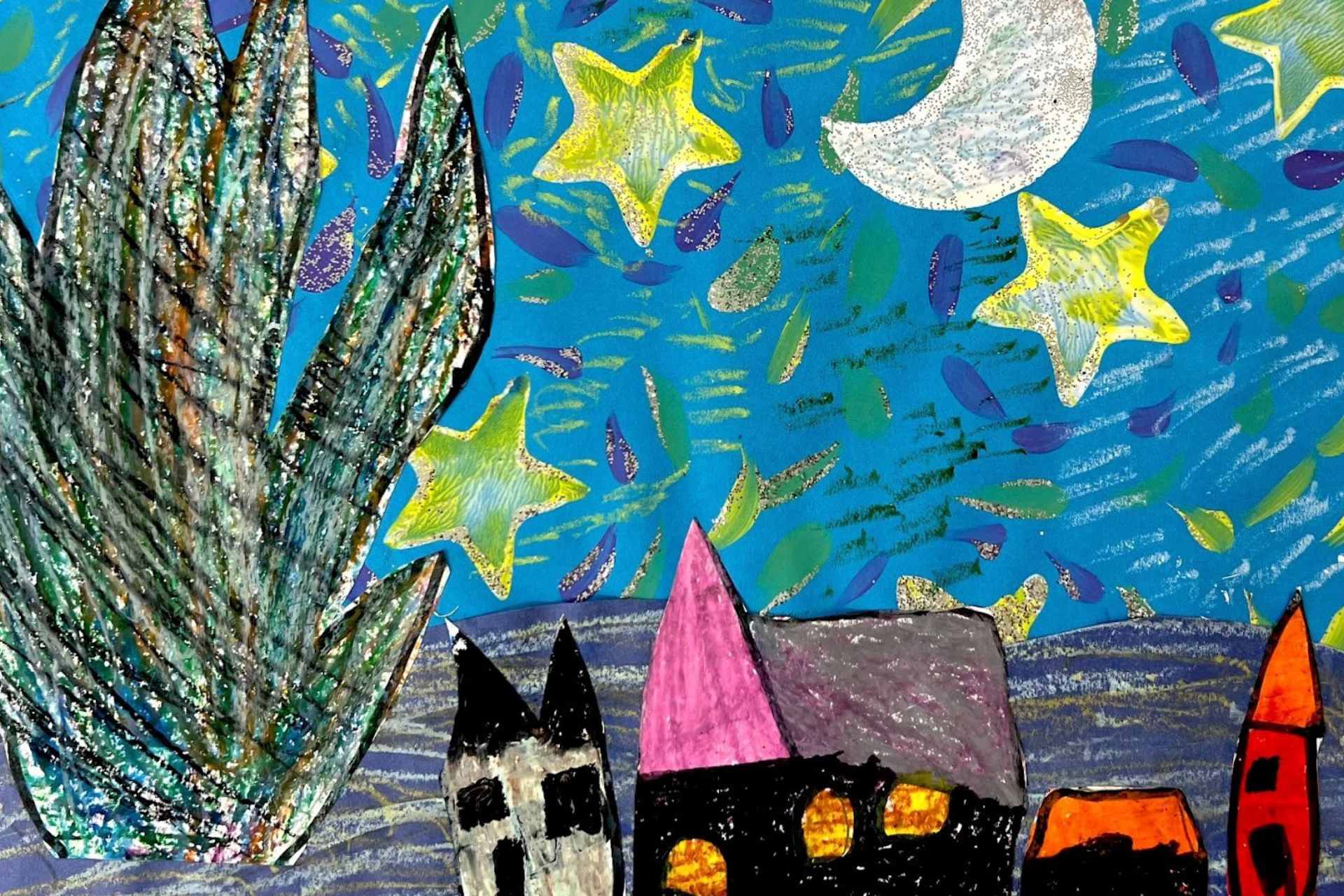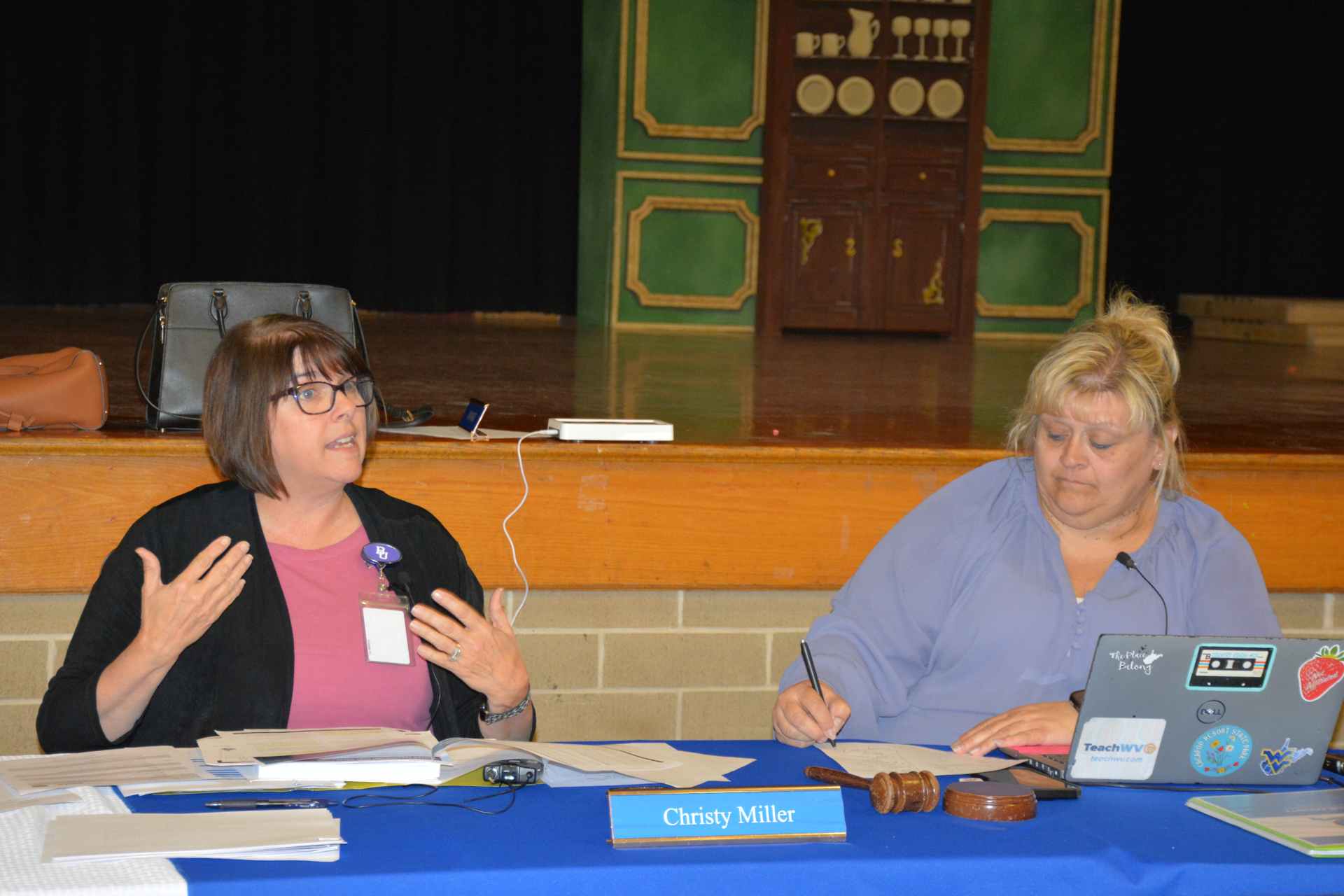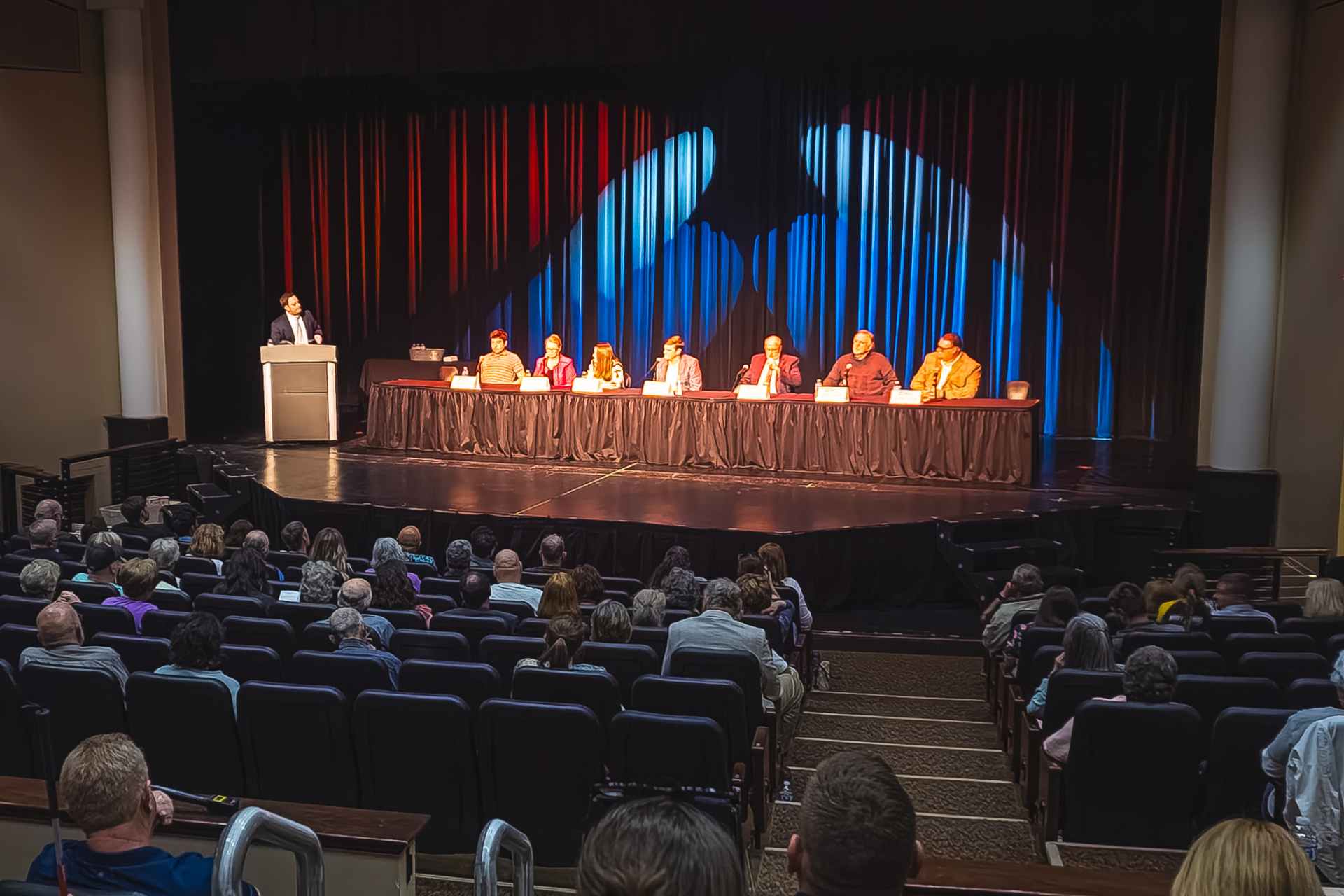Crayfish. Perhaps you know them as mudbugs, freshwater lobsters, crawfish, or crawdads. No matter the name, these fellow Appalachian natives are fondly woven into the tapestry of West Virginia, home to about 30 crayfish species. They play an important role in streams by recycling animal and plant matter and serving as food for other wildlife, including sport fish. Keeping streams healthy for crayfish also benefits people by ensuring clean water for drinking, swimming, wading and fishing.
Thanks to a partnership with the West Virginia Division of Highways, U.S. Fish and Wildlife Service, and West Liberty University, two crayfish will be the focus of a conservation initiative including research and school programs in the West Virginia coalfields.
The crayfish – the threatened Big Sandy crayfish (Cambarus callainus) and Guyandotte River crayfish (Cambarus veteranus) – are native to the region. They were protected under the Endangered Species Act in 2016 following a review of scientific and commercial information. Ongoing erosion and sedimentation have made many streams within the basins of the Big Sandy and Upper Guyandotte rivers uninhabitable for the species. Today, the Big Sandy crayfish is found in six isolated populations across Floyd and Pike counties, Kentucky; Buchanan, Dickenson, and Wise counties, Virginia; and McDowell and Mingo counties, West Virginia. The Guyandotte River crayfish is found in only two streams in Wyoming County, West Virginia.
This conservation initiative was spurred by coordination across the two agencies and the university to move protected crayfish out of the way of bridge updates and replacements occurring in the next several years in the Big Sandy River watershed.
“The Division of Highways is thrilled to be part of an initiative that will benefit so many people as well as a native West Virginia species,” said WVDOH Natural Resource Unit leader Traci Cummings. WVDOH endangered species specialist Sydney Burke added, “Transportation projects give us opportunities to work on rare wildlife in the area, and to find ways to conserve those species while ensuring the state’s roads and bridges are up to date and safe.”
WVDOH is providing nearly $178,000 to WLU to determine the effects of construction activities on crayfish, explore whether crayfish use bridge debris for habitat, monitor crayfish after construction, and provide educational opportunities to local students and communities.
“We have had a wonderful partnership with WVDOH for many years now,” said U.S. Fish and Wildlife Service biologist Liz Stout. “We are so excited that they are facilitating research and educational outreach for these species. The results of this conservation initiative will help us protect these species and develop ways to construct bridges that will have less of an effect on crayfish in the future.”
The initiative will begin in 2020, with undergraduate and graduate students from WLU Professor Zachary Loughman’s lab conducting field work with crayfish. Graduate students recruited from across the country will track crayfish movements in the wild to better understand how the crayfish live their daily lives, how crayfish respond to bridge construction near their stream home, and how the WVDOH can improve their bridge design and construction process to lessen the impacts to the imperiled crayfish.
“My students and I want to do everything we can to get the word out about crayfish, why they’re important and what we need to do to save them,” said Loughman. “Through this initiative, we are excited to foster the connection communities already have with the streams and rivers in this region. We wouldn’t have this opportunity if we didn’t receive this funding from West Virginia DOH.”
Everyone can help keep streams healthy for crayfish, trout and other wildlife:
- Drive ATVs and vehicles on designated trails and not through or in streams.
- Don’t dump chemicals into streams and report chemical spills to state environmental protection agencies.
- During timber harvest, construction, or other projects, implement best management practices for sediment and erosion control.
- Start a watershed group or assist in stream and water quality monitoring efforts.
- Plant trees and other native woody vegetation along stream banks to help restore and preserve water quality.
The mission of the U.S. Fish and Wildlife Service is working with others to conserve, protect, and enhance fish, wildlife, plants, and their habitats for the continuing benefit of the American people. We are both a leader and trusted partner in fish and wildlife conservation, known for our scientific excellence, stewardship of lands and natural resources, dedicated professionals, and commitment to public service. For more information on our work and the people who make it happen, visit www.fws.gov.
West Liberty University is a four-year public university steeped in a rich heritage as West Virginia’s oldest institution. Today it offers more than 70 undergraduate majors, plus a growing number of graduate programs, both online and on campus. For more information, please call 1.866.937.8542 (WESTLIB) or visit westliberty.edu or follow WLU on social media. To view more about WLU, please visit westliberty.edu/youtube.
ABOUT DR. LOUGHMAN:
Selected as West Virginia’s 2014 Professor of the Year by the Faculty Merit Foundation, Dr. Zachary “Zac” Loughman is well known for his research and surveying of crayfish. His research focuses on the natural history, taxonomy, and conservation of North American crayfishes and he has named five species of crayfish. Loughman’s laboratory is one of the few in the country that focuses solely on astacology, the academic study of crayfishes (crayfish biology). To date, Loughman and his students have sampled crayfish in 13 states, and more than 3,000 streams across the eastern and central United States. Also a WLU alumnus, he serves as zoo science and applied conservation coordinator in the Department of Natural Science and Mathematics, in addition to his role as professor of biology, zoology and ecology.
